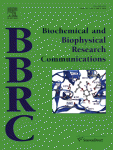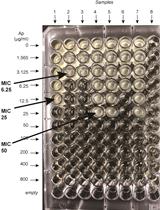- EN - English
- CN - 中文
Detection of Reactive Oxygen Species (ROS) in Cyanobacteria Using the Oxidant-sensing Probe 2’,7’-Dichlorodihydrofluorescein Diacetate (DCFH-DA)
使用氧化物探针2',7'-二氯二氟荧光素二乙酸酯(DCFH-DA)检测蓝细菌中活性氧物质(ROS)
发布: 2017年09月05日第7卷第17期 DOI: 10.21769/BioProtoc.2545 浏览次数: 25968
评审: Dennis NürnbergPooja SaxenaAnonymous reviewer(s)

相关实验方案
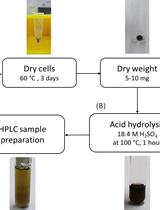
酸水解-高效液相色谱法测定集胞藻PCC 6803中聚3-羟基丁酸酯的含量
Janine Kaewbai-ngam [...] Tanakarn Monshupanee
2023年08月20日 1742 阅读
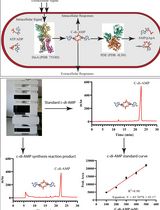
基于高效液相色谱法的史氏分枝杆菌DisA环二腺苷酸(C-di-AMP)合成酶活性研究
Avisek Mahapa [...] Dipankar Chatterji
2024年12月20日 1707 阅读
Abstract
Reactive oxygen species (ROS) are cell signaling molecules synthesized inside the cells as a response to routine metabolic processes. In stress conditions such as ultraviolet radiation (UVR), ROS concentration increases several folds in the cells that become toxic for the cell survival. Here we present the method for in vivo detection of ROS by using an oxidant-sensing probe 2’,7’-dichlorodihydrofluorescein diacetate (DCFH-DA) in cyanobacteria. This method provides reliable, simple, rapid and cost effective means for detection of ROS in cyanobacteria.
Keywords: Reactive oxygen species (活性氧)Background
Cyanobacteria are the most ancient oxygenic photoautotrophs; they play an important role in the biomass production in both aquatic and terrestrial ecosystems and serve as source of various value-added products (Vaishampayan et al., 2001; Häder et al., 2007; Fischer, 2008). In recent years the depletion of the ozone layer has resulted in an increase in solar ultraviolet radiation (UVR) influx, which is harmful to all organisms residing on Earth including cyanobacteria (Holzinger and Lutz, 2006). The UVR harms cyanobacteria directly by acting on DNA/proteins or indirectly through oxidative damage from reactive oxygen species (ROS) (He and Häder, 2002). In plants, algal and mammalian cells various fluorescence and chemiluminescence methods have been used for detecting ROS (Crow, 1997; He and Häder, 2002; Soh, 2006; Wu et al., 2007; Palomero et al., 2008).
2’,7’-Dichlorodihydrofluorescein diacetate (DCFH-DA) is a non-fluorescent, cell-permeable dye which is hydrolyzed intracellularly into its polar, but non-fluorescent form DCFH on the action of cellular esterases and thus is retained in the cell. Oxidation of DCFH by the action of intracellular ROS and other peroxides turns the molecule into its highly fluorescent form 2’,7’-dichlorofluorescein (DCF) that can be detected by various fluorescent methods (He and Häder, 2002; Rastogi et al., 2010; Singh et al., 2014) (Figure 1). Although DCFH-DA is widely used for the detection of ROS, it should be noted, however, that the dye cannot be used as an indicator for a specific form of ROS (Marchesi et al., 1999).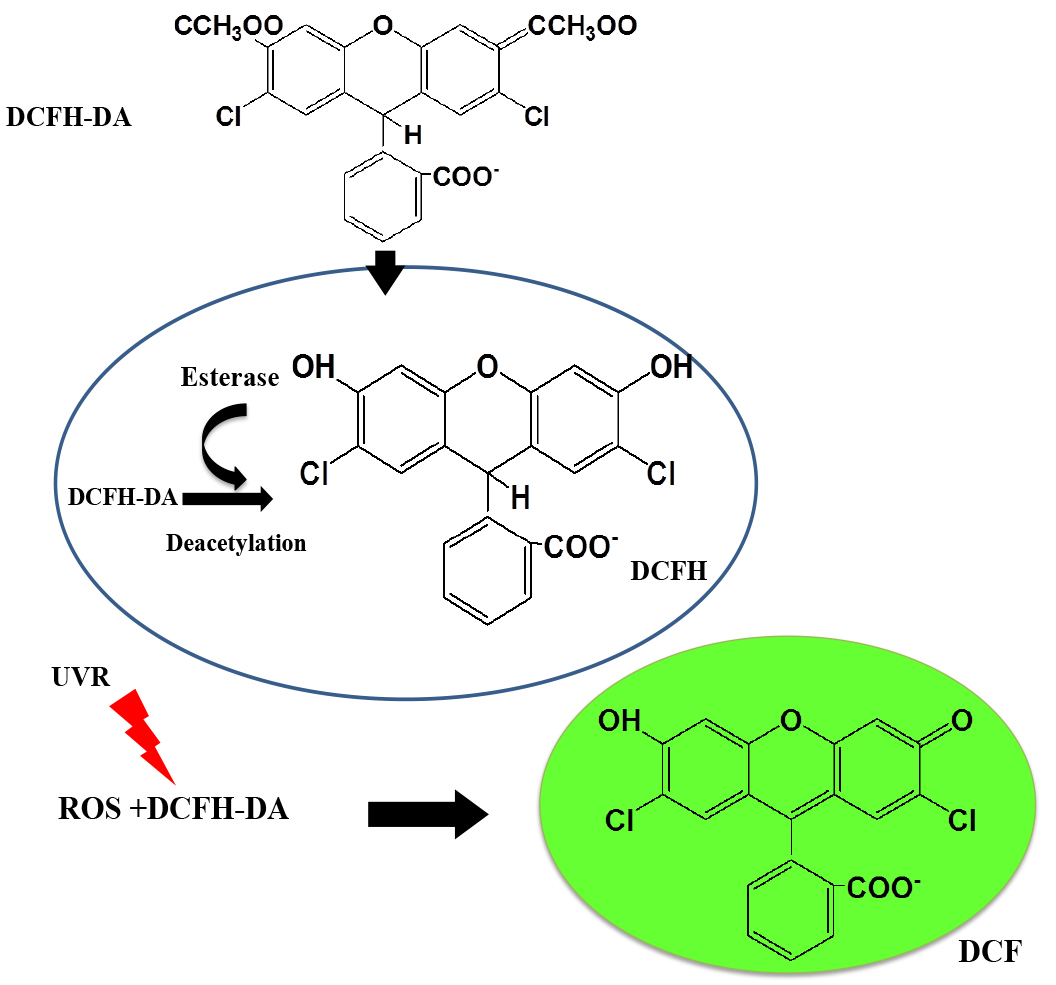
Figure 1. Mechanism of action of DCFH-DA probe inside the cell (Adapted from He and Häder, 2002)
Materials and Reagents
- 2 ml RNase, DNase free microcentrifuge tube (Thermo Fisher Scientific, InvitrogenTM, catalog number: AM12425 )
- Glass microscope slides (Fisher Scientific, catalog number: 12-544-4 )
- Glass microscope coverslips (Fisher Scientific, catalog number: S17525B )
- Millipore membrane filter (EMD Millipore, catalog number: HAWP04700 )
- Cuvette (fluorescence spectroscopy) 3 ml (Hellma, catalog number: 101-QS )
- Cyanobacterial cells e.g., Nostoc sp. strain HKAR-2
Note: Nostoc sp. strain HKAR-2, an autotrophic, filamentous and heterocystous cyanobacterium, was grown under axenic conditions in nitrogen-free liquid BGA medium (Safferman and Morris, 1964) at 20 ± 2 °C under continuous white light (12 ± 2 Wm-2) to an OD750 of 0.8 to 0.9 (exponential growth phase) which was measured using quartz cuvette in a spectrophotometer. - Nail varnish (Lakme)
- Potassium phosphate dibasic anhydrous (K2HPO4)
- Potassium phosphate monobasic (KH2PO4)
- 2’,7’-Dichlorodihydrofluorescein diacetate (DCFH-DA) (Sigma-Aldrich, catalog number: D6883 )
- 100% ethanol (Sigma-Aldrich, catalog number: 459836 )
- 50 mM phosphate buffer (see Recipes)
- 2 mM 2’,7’-dichlorodihydrofluorescein diacetate (DCFH-DA) stock solution (see Recipes)
Equipment
- Glass Petri-dishes (Corning, catalog number: 3160-102 )
- Measuring cylinder
- 295 nm UV cut-off filter (Ultraphan, Digefra, Munich, Germany) to facilitate the desired wavebands of UV-B (280-315 nm), UV-A (315-400 nm) and PAR (400-700 nm)
- UV-treatment chamber fitted with UV-B (Philips Ultraviolet-B TL 40 W: 12, Philips Lighting, model: TL 40W/12 RS SLV/25 ), UV-A (Philips Ultraviolet-A TL 40 W: 12, Philips Lighting, model: TL-K 40W/10-R UV-A ) and PAR (55.08 ± 9.18 μmol m-2 sec-1) (OSRAM L 36 W: 32 Lumilux de luxe warm white and Radium NL 36 W: 26 Universal white, Germany) lamps
- Glass rod (Fisher Scientific, catalog number: 11-380A )
- Magnetic stirrer (REMI ELECTROTECHNIK, model: 2 MLH )
- Refrigerated centrifuge (REMI ELECTROTECHNIK, model: CM-12 PLUS )
- Shaker
- Fluorescence microscope (Nikon eclipse Ni fluorescence microscope processed by NIS Elements (BR))
- Fluorescence spectrophotometer (Agilent Technologies, model: Cary Eclipse )
- Spectrophotometer (Hitachi High-Technologies, model: U-2900 , Double beam spectrophotometer)
- Quartz cuvette (3.5 ml) (Cole-Parmer, JENWAY, catalog number: 035 028 )
Software
- NIS-Elements (BR) imaging software (Nikon)
- SigmaPlot 11 software
Procedure
文章信息
版权信息
© 2017 The Authors; exclusive licensee Bio-protocol LLC.
如何引用
Rajneesh, , Pathak, J., Chatterjee, A., Singh, S. P. and Sinha, R. P. (2017). Detection of Reactive Oxygen Species (ROS) in Cyanobacteria Using the Oxidant-sensing Probe 2’,7’-Dichlorodihydrofluorescein Diacetate (DCFH-DA). Bio-protocol 7(17): e2545. DOI: 10.21769/BioProtoc.2545.
分类
微生物学 > 微生物生物化学 > 其它化合物
生物化学 > 其它化合物 > 活性氧
您对这篇实验方法有问题吗?
在此处发布您的问题,我们将邀请本文作者来回答。同时,我们会将您的问题发布到Bio-protocol Exchange,以便寻求社区成员的帮助。
Share
Bluesky
X
Copy link




